Whether you’re a seasoned chef or just starting out, cooking seafood at home can be a delightful and rewarding experience. With a variety of methods, techniques, and recipes available, there’s no better time than now to master the art of preparing fresh and flavorful seafood dishes right in your own kitchen. From classic seafood boils to simple oven-baked recipes, this guide will walk you through everything you need to know to succeed. Discover the best ways to cook seafood, avoid common mistakes, and create unforgettable meals that your family and friends will love. Let’s dive in and explore the world of seafood cooking together!
Key Takeaways
- Cook Frozen Seafood Safely and Deliciously: Enjoy convenient, high-quality meals with frozen seafood that maintains its flavor and texture.
- Choose the Best Cooking Method: Opt for baking, pan-frying, grilling, or deep-frying to achieve perfect results based on your preference and cooking setup.
- Understand When to Thaw Shrimp: Thaw for tender texture and richer flavor, or cook frozen shrimp for quick, convenient meals.
- Avoid Overcooking for Tender Results: Check for doneness early to ensure seafood remains juicy and flavorful.
- Enhance Flavor with Seasonings: Add marinades or spices early for a more vibrant taste.
- Use Proper Tools for Success: Employ non-stick skillets or grill baskets to prevent sticking and ensure even cooking.
- Pair with Complementary Sides: Complete your meal with sides like rice or vegetables for a balanced dish.
- Experiment with Recipes: Explore a variety of dishes, from family-friendly options to gourmet creations, using frozen seafood.
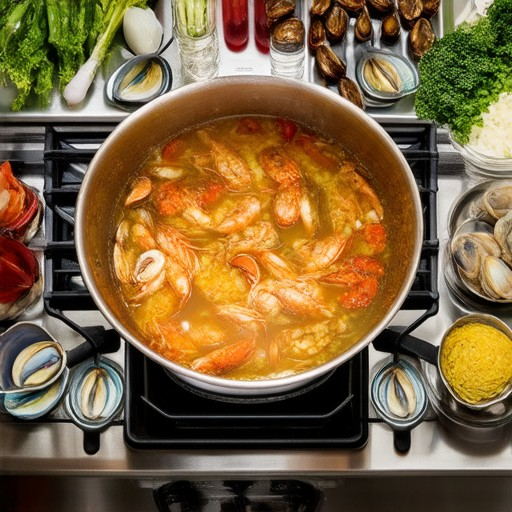
Best Cooking Methods for Seafood
The best cooking method for seafood depends on the type of fish and personal preference. Here are some popular methods:
- Grilling: Ideal for firm fish like salmon, tuna, and swordfish. Use a grill basket for smaller pieces to prevent flaking.
- Baking: Great for fish like cod, halibut, and tilapia. Season with herbs, lemon, and olive oil for a simple dish.
- Pan-Frying: Versatile for most fish types. Keep the heat medium-low to avoid overcooking. Use a splatter guard for easier cleanup.
- Deep-Frying: Best for breaded or battered fish like fish sticks or tempura. Requires flour or cornmeal coating and oil temperature control.
- Steaming: A healthy option for delicate fish like sole or trout. Preserves moisture and flavor without added fats.
- Poaching: Low-fat method ideal for fish like tilapia or catfish. Use broth, wine, or butter for added flavor.
- Smoking: Adds a unique flavor to fish like salmon or trout. Can be done at home using a smoker box or purchased pre-smoked.
Each method has its benefits, so experiment to find your favorite way to prepare seafood. Whether you prefer grilling, baking, or frying, there’s a technique that suits every taste preference and skill level.
What is the Most Common Mistake When Cooking Seafood?
- Overcooking the seafood is one of the most frequent errors. Cooking fish or seafood beyond the recommended time often leads to a dry, flavorless result. For pan-frying, aim for 3 to 5 minutes per side depending on thickness.
- Undercooking seafood can also be problematic, especially with delicate varieties like salmon or cod. Ensure internal temperatures reach a safe minimum of 145°F (62°C) for bacterial safety while maintaining doneness.
- Mistakenly handling seafood can ruin its texture and flavor. Over-manipulating or pressing it after cooking can make it mushy. Handle gently with care during prep and cooking processes.
- Seasoning errors are common too. Overuse of salt or spices can overpower the natural flavors, while insufficient seasoning can leave dishes bland. Balance flavors appropriately for a harmonious taste.
- Cooking temperature control is crucial. High heat can burn or overcook seafood, while low heat may leave it underdone. Use a timer and consider a cooking thermometer for precise monitoring.
- Choosing the wrong cooking method for the type of seafood can lead to poor results. For instance, deep-frying fish like tempura requires thin, batter-coated pieces, whereas grilling works well for thicker cuts of meatier fish like tuna or swordfish.
General Tips:
- Use a timer to track cooking times.
- Invest in a reliable fish thermometer for accuracy.
- Experiment with different methods to find what works best for your preferred seafood and recipe.
- Always check for doneness by testing with a fork before serving.
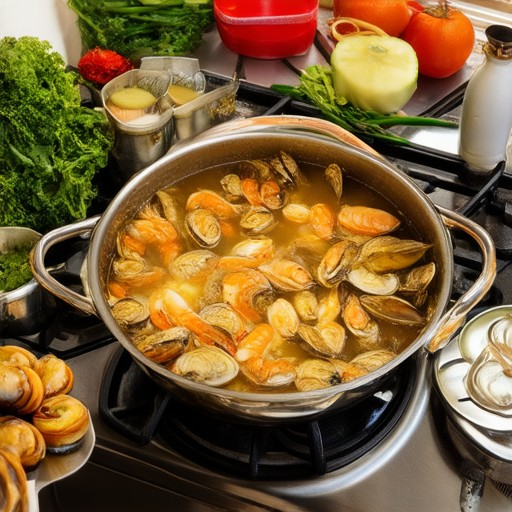
What Seasoning Do You Put in a Seafood Boil?
For a delicious and flavorful seafood boil, the key is to use a well-balanced seasoning blend that enhances the natural taste of the seafood while adding depth and aroma. Here’s a breakdown of the most common seasonings and tips to get the best results:
Primary Seasonings:
- Old Bay Seasoning : A classic choice, Old Bay is known for its bold and spicy flavor with notes of paprika, cayenne, and mustard. It’s perfect for shrimp, crab, and lobster.
- Cajun Seasoning : Adds a kick with ingredients like chili powder, garlic, and onions. It works well with crawfish and catfish.
- Paprika and Garlic : A simple yet effective combination that brings out the sweetness of the seafood.
- Herbs and Spices : Incorporate herbs like thyme, rosemary, and bay leaves for a more aromatic profile.
Alternative Options:
If you’re looking for something different, try these variations:- Low-Carb Option : Use a seasoning blend without added sugars or high-carb ingredients.- Vegetarian/Vegan : Opt for plant-based versions that exclude animal products.
Usage Tips:
- Sprinkle the seasoning directly onto the seafood or mix it with melted butter or oil before boiling.
- For a extra flair, add lemon slices or corn on the cob to complement the flavors.
Storage:
Store your seasoning in an airtight container to keep it fresh and ready for your next boil.
By using these seasonings and tips, you’ll elevate your seafood boil to a memorable dining experience!
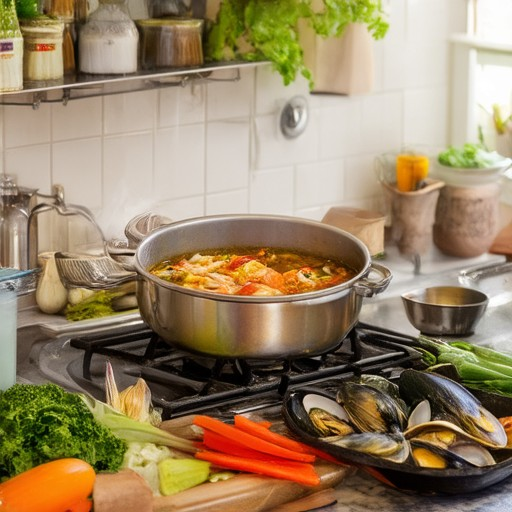
What is the Best Way to Cook Frozen Seafood?
Cooking frozen seafood can be a convenient and delicious option for any meal. Whether you’re a seasoned chef or new to working with frozen ingredients, follow these simple tips to get the best results:
1. Baking or Roasting
Baking is a versatile method that works well for many types of frozen seafood. Here’s how to do it:
- Preheat Oven:** Set your oven to 450°F (230°C). This temperature is ideal for sealing the surface of the seafood without overcooking it.
- Prepare Seafood:** Lightly rinse the seafood under cold water to remove any ice crystals, then pat it dry with a paper towel.
- Season:** Sprinkle with your favorite seasonings, such as lemon pepper, garlic powder, or herbs.
- Bake:** Place the seafood on a baking sheet or roasting pan. For even cooking, place it in a single layer, leaving space between pieces to promote air circulation.
- Cook Time:** Most frozen seafood takes about 10-15 minutes to cook. Check for doneness by looking for opacity and flaking easily with a fork.
Tips: For a crispy texture, brush the seafood with olive oil before baking. Add vegetables like broccoli or potatoes to the same pan for a complete meal.
2. Pan-Frying
Pan-frying is a great method for those who prefer a bit of oil and a crispier finish:
- Heat Oil:** Use a medium-sized skillet or frying pan and add a thin layer of vegetable oil or butter.
- Prep Seafood:** Pat the seafood dry with a paper towel to ensure it seizes properly.
- Cook:** Fry the seafood for about 3-4 minutes per side until golden brown and cooked through. Remove from heat and drain on paper towels.
Tips: For a healthier option, use olive oil or coconut oil. Add garlic, onions, or spices to the pan for added flavor.
3. Grilling
Grilling is perfect for those who love the smoky flavor of cooking outdoors:
- Preheat Grill:** Set your grill to medium-high heat, around 400-450°F (200-230°C).
- Prepare:** Rinse and pat dry the seafood. Lightly brush with olive oil or a specialty seafood rub.
- Grill Time:** Cook for about 3-4 minutes per side, depending on the thickness of the seafood. Flip once for even cooking.
Tips: Use a grill basket or skewers for smaller pieces to prevent them from falling through the grates. Add wood chips for smoke flavor if desired.
4. Deep-Frying
Deep-frying is a classic method for achieving a crispy exterior:
- Heat Oil:** Fill a large Dutch oven or deep pan with enough oil to fully submerge the seafood (about 1-1.5 inches of oil). Heat to 350°F (175°C).
- Fry:** Carefully lower the seafood into the hot oil and fry for 3-4 minutes per side until golden and cooked through. Remove and drain on paper towels.
Tips: Use a candy thermometer to monitor oil temperature. Fry in small batches to avoid overcrowding the pan and cooling the oil too much.
General Tips for Success
- Don’t Overcook:** Seafood becomes tough and rubbery when overcooked. Check for doneness by testing with a fork or knife.
- Use Proper Tools:** A good meat thermometer is handy for checking internal temperatures, though it’s not always necessary for thinner pieces.
- Consider Sides:** Pair your seafood with sides like rice, pasta, or vegetables for a balanced meal.
By following these methods and tips, you can enjoy perfectly cooked frozen seafood every time. Experiment with different seasonings and cooking techniques to find your personal favorite!
Can You Cook Seafood Straight From Frozen?
Yes, you can cook seafood straight from frozen, though the approach may vary slightly depending on the type of seafood and your preferred cooking method. Here’s a guide to help you get started:
Steps to Cook Frozen Seafood
- Defrosting (Optional): While not always necessary, defrosting frozen seafood can improve its texture and flavor. Place it in the refrigerator for 24-48 hours before cooking.
- Cooking Methods:
- Sauteeing: Heat a pan with oil or butter over medium heat. Add the frozen seafood and cook for 4-6 minutes per side, or until fully opaque and cooked through.
- Grilling: Preheat your grill to medium-high heat. Place the frozen seafood on the grill for 4-6 minutes per side, or until it reaches your desired level of doneness.
- Baking: Preheat your oven to 425°F (220°C). Place the frozen seafood on a baking sheet or casserole dish and bake for 15-20 minutes, or until it’s fully cooked.
- Panini or Griddle: Cook the frozen seafood for 4-6 minutes on a preheated panini or griddle, flipping once halfway through.
- Check Doneness: Use a food thermometer to ensure the internal temperature reaches the recommended safe eating range for the type of seafood you’re cooking (typically around 145°F or 63°C for most fish).
Tips for Cooking Frozen Seafood
- Season Early: Add your favorite seasonings or marinades to the frozen seafood before cooking for added flavor.
- Don’t Overcook: Seafood becomes tough and dry quickly when overcooked. Remove it from the heat as soon as it reaches the desired consistency.
- Use the Right Pan: Choose a non-stick skillet or grill pan to prevent sticking and ensure even cooking.
- Consider Portion Size: Larger portions may take longer to cook, so adjust your cooking time accordingly.
Why Cook Frozen Seafood?
Frozen seafood is a convenient option for those short on time. It maintains its quality and nutrients, making it a great choice for meals any day of the week. Plus, it’s typically available at affordable prices and has a longer shelf life compared to fresh seafood.
Recipe Ideas for Frozen Seafood
- Easy Weeknight Meals: Try our Fish Tacos or Sheet Pan Shrimp Scampi .
- Family-Friendly Dishes: Check out our Kidney Beans and Fish Stew or Seafood Pasta Primavera .
- Gourmet Creations: Experiment with our Pan-Seared Salmon with Dill Cream Sauce or Grilled Salmon Caesar Salad .
Conclusion
Cooking seafood from frozen is a simple and delicious option that saves time and effort. Whether you’re preparing a quick meal or planning a special dinner, frozen seafood offers flexibility and convenience. Just ensure you follow these tips and cooking methods to enjoy a flavorful and safely prepared dish every time!

Should You Cook Raw Shrimp Frozen or Thawed?
When deciding whether to cook raw shrimp frozen or thawed, consider the following:
- Texture: Frozen shrimp tend to have a firmer texture due to ice crystals, which can affect how they cook. Thawed shrimp may offer a more tender and juicy texture.
- Flavor: Thawed shrimp generally have a richer flavor as the ice melts, bringing out more natural juices. Frozen shrimp can still be tasty but may lack the same depth of flavor.
- Cooking Process: Cooking frozen shrimp may require adjusting the cooking time or heat source to prevent them from becoming rubbery. Proper cooking methods, such as pan-searing on high heat, can yield tender results.
- Convenience: Frozen shrimp are convenient for quick cooking, ideal for those short on time. Thawed shrimp offer more flexibility in recipes, especially those requiring longer cooking times or marinating.
- Dish Type: Consider the dish. For dishes like stir-fries or ceviches, where tenderness is crucial, thawing is preferable. For quick cooking methods like grilling or sautéing, frozen shrimp can work well.
- Waste Management: Buying frozen shrimp can minimize waste, allowing you to measure exactly what you need. Thawed shrimp may lead to waste if not used entirely.
Conclusion: Choose based on your preferences and circumstances. For optimal flavor and texture, thaw shrimp if possible. For convenience, frozen shrimp are a viable option, especially in hurried situations.

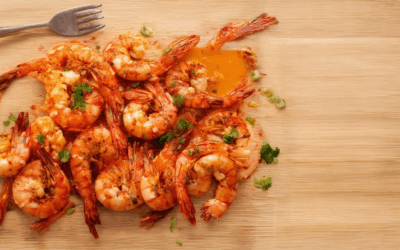
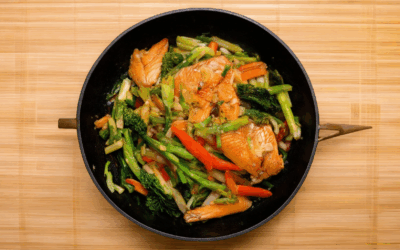
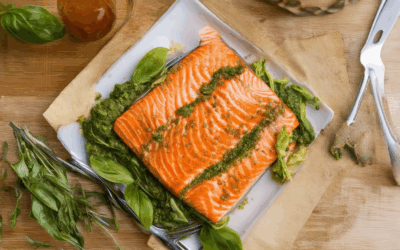
0 Comments